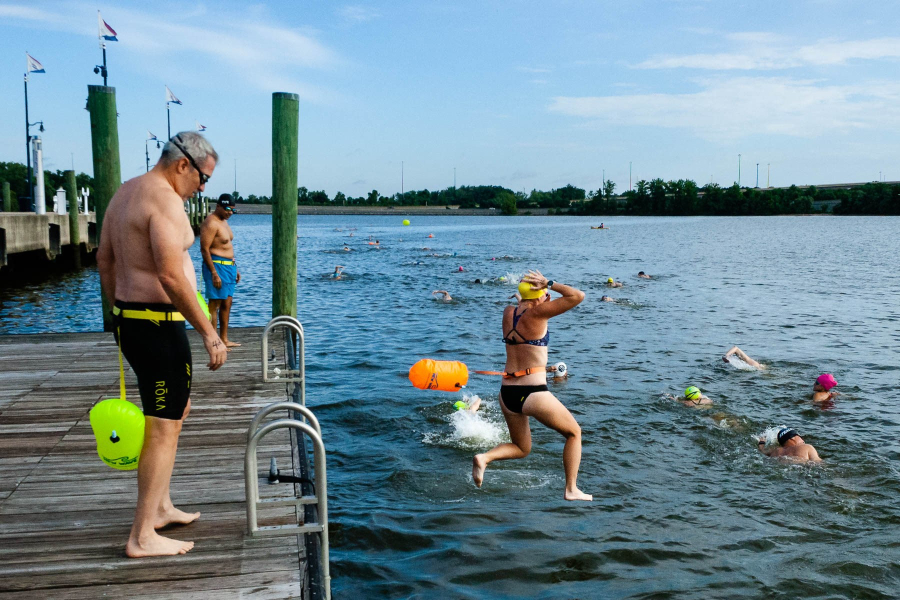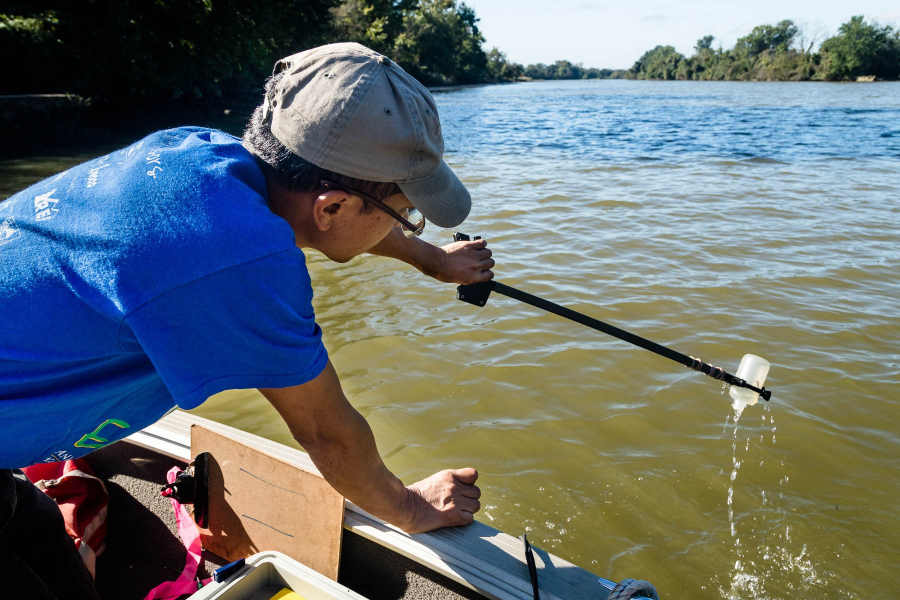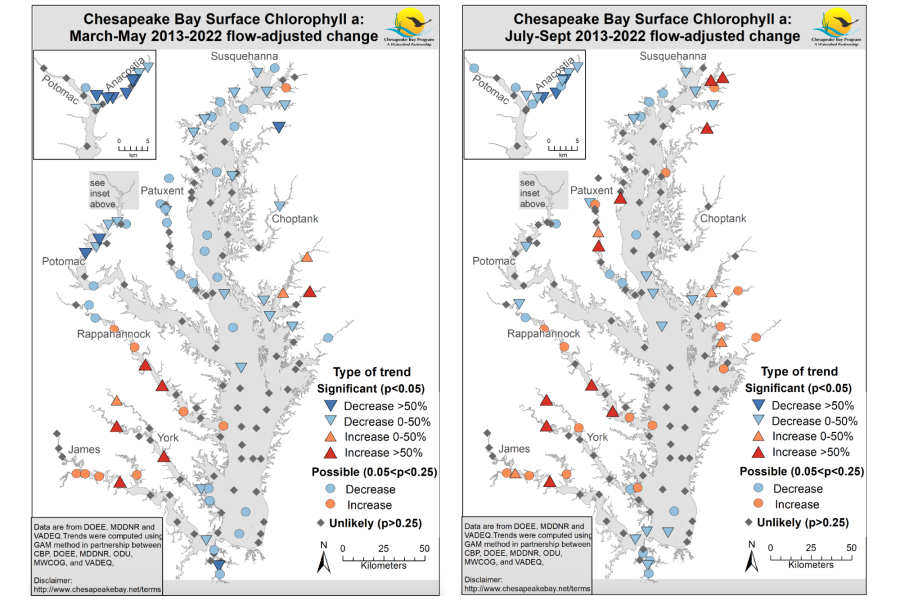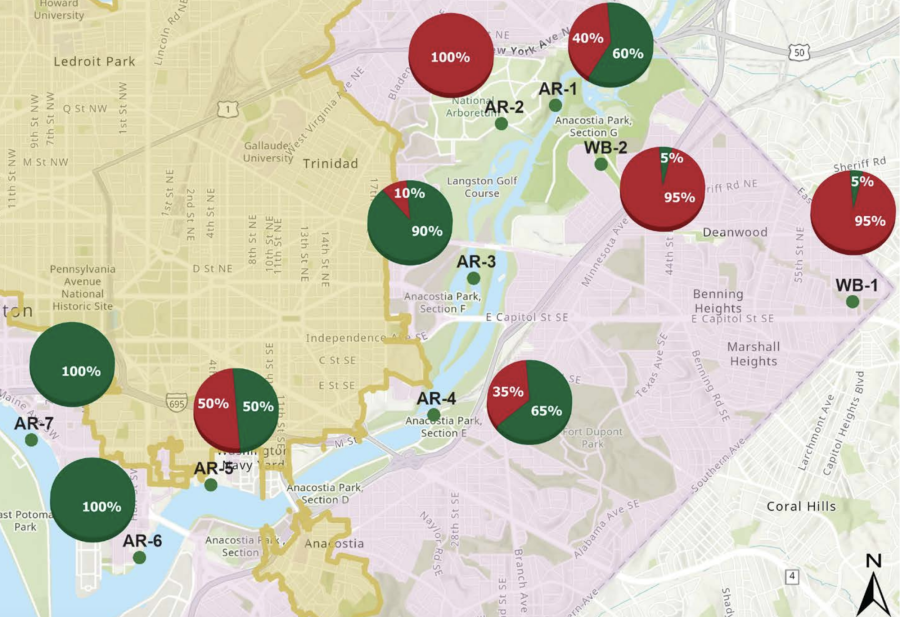New data confirms that the Anacostia River is getting cleaner
Improvements seen in two major water quality measurements

If you’ve been following local Washington, D.C., news over the last six months, you may have heard about the Anacostia River Splash event that was canceled due to inclement weather. Given the legacy of pollution in the Anacostia, it may come as a surprise that a swim event can even be organized. While it is still illegal to swim in the Anacostia because the river has not met water quality standards in many respects, conditions in some parts of the river are improving, which makes a carefully monitored and arranged swimming event now possible.
Multiple factors go into determining if the Anacostia and other tributaries of the Chesapeake Bay are safe for swimming. E. coli, chlorophyll a, and water clarity are key water quality parameters that need to be evaluated.
E. coli and fecal coliform serve as an indicator to identify the presence of more dangerous bacteria that can cause illness in humans and pets. Water clarity—which is measured by lowering a black-and-white “Secchi disk” into the water until it’s no longer visible—tells us if there’s an overabundance of sediment that blocks sunlight from reaching plants. Lastly, levels of chlorophyll a—a compound found in algae and other plants—can indicate multiple aspects of a river’s health. If it’s too low, that can mean there is a lack of phytoplankton in the water, which creates an imbalance in the food web. If it’s too high, that can indicate the presence of algae blooms, which can lead to low-oxygen “dead zones” in the water. In the Anacostia, chlorophyll-a has been historically high due to nutrient runoff from the surrounding landscape.

The Chesapeake Bay Program plays a key role in monitoring the health of our waterways. We partner with local governments, state agencies, universities, nonprofits and community groups that produce water quality data, which can feed into an official water quality indicator for the full Chesapeake Bay. Similarly, the partnership—with the help of a specialized analyst team—has recently been developing in-depth summaries of water quality for specific rivers, as well as a summary for the Bay’s tidal areas.
In 2022 and 2023, the District of Columbia’s Department of Energy and the Environment (DOEE) Water Quality Monitoring and Assessment team provided key data for the Anacostia River’s tidal areas—specifically measurements of chlorophyll and water clarity. With support from DOEE and scientists at the Chesapeake Bay Program, the Metropolitan Washington Council of Governments (COG) used this data to calculate trends over time. What we found is that in the Anacostia River, there are improvements in water clarity occurring over the long term, and reductions in chlorophyll-a levels in the short term (see Figure 1 below).

These are signs of improvement in the Anacostia’s health. In certain parts of the river, bacteria levels are also far lower than what they once were. The 2022 DC Citizen Science Water Quality Monitoring Report shows that Kingman Island, Buzzard Point and the Washington Channel passed the state bacteria standard 90% of the time or more (see Figure 2). Visit the Chesapeake Monitoring Cooperative’s data explorer to view bacteria monitoring data for the Anacostia.

These water quality improvements in the Anacostia River have not occurred due to chance. Across Maryland and Washington, D.C., people are working hard to clean up the Anacostia. In Montgomery County and Prince George’s County, Maryland, where approximately 80% of the Anacostia’s total flow comes from, the Washington Suburban Sanitary Commission has rehabilitated over 104 miles of sanitary sewer pipes. At the end of 2023, the commission will have captured 96% of the sewage overflow within their pipes and directed that flow to a wastewater treatment facility rather than to the Anacostia streams.
Similarly, downstream, DC Water has completed its Anacostia Tunnel System—which includes the Blue Plains, Anacostia, First Street and Northeast Boundary Tunnels—as part of the Clean Rivers Project. The system will reduce combined sewer overflow volume by 98% in a year of average rainfall and will provide a high level of treatment for captured Combined Sewer Overflows at the Blue Plains Advanced Wastewater Treatment Plant.
Additionally, DC DOEE leads programs like RiverSmart Homes, Communities, Schools and Rebates which encourage residents to reduce the pollutants entering the Anacostia from their communities during storms by installing rain gardens, planting trees and replacing hard surfaces with permeable pavers. Prince George’s County Department of the Environment and Montgomery County Department of Environmental Protection have implemented similar incentive and rebate programs as well. All three jurisdictions have also focused on streambank stabilization and low-impact development practices, which have likely improved water clarity.
Other local efforts to improve water quality include impervious surface restoration, stormwater stewardship grants, illicit discharge detection and elimination, increased street sweeping, and litter reduction outreach and education. For more information, please see these resources from DC DOEE, Prince George's County, and Montgomery County.
These efforts have helped the Anacostia, but it still has a long way to go. Despite improving trends, many water quality standards have not yet been met. If you would like to support the transition towards a swimmable Anacostia in the future, you can start by learning more about the health of the river and getting involved with groups like the Anacostia Riverkeeper, Anacostia Watershed Society and the Anacostia Community Advisory Committee.

Comments
There are no comments.
Thank you!
Your comment has been received. Before it can be published, the comment will be reviewed by our team to ensure it adheres with our rules of engagement.
Back to recent stories